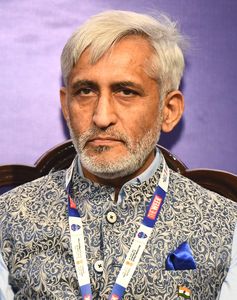Though the details of the weapons used in Operation Sindoor are not revealed, it seems that air-to-ground missiles, long-range glide bombs and other unmanned assets were employed. After the strike, Indian Air Force fighters carried out combat air patrols to deter Pakistan from launching immediate counter-attacks. The pin-point strikes at multiple locations highlighted the salience of advanced aerial technologies. India, by striking headquarters and training sites of terrorist organisations deep inside Pakistan, crossed an important psychological barrier that prevented employment of air assets for undertaking punitive strikes in the past.
These attacks have demonstrated that air power can be employed in less than conventional war scenarios and also highlighted the need for accurate intelligence if targets have to be destroyed with minimum collateral damage. The precise strikes were carried out without significant loss of life that a ground action may accrue. It increased the cost of terrorism and deprived perpetrators the safety and immunity that they were accustomed to.
India’s actions did not provide Pakistan legitimate excuse for escalation as the attacks did not target civilian and military installations. However, Pakistan launched missiles and drones, and attempted to engage a number of military installations in northern and western India on the intervening night of May 7 and the morning of May 8. These were neutralised with integrated counter UAS (unmanned aerial systems) grid and air defence systems. Indian armed forces targeted Pakistani radars and systems at a number of locations on May 8 and neutralised a radar at Lahore. This neutralisation would degrade Pakistan’s ability to direct its fighters close to the Indian border. India also attacked Pakistani artillery and mortars as their unprovoked firing had taken 18 civilian lives on the Indian border. India maintained that its response was proportionate and was non-escalatory in nature.
As seen in this attack, aerial technologies will play varying roles in future conflicts. The employment of unmanned aerial vehicles for evacuation of downed pilots may no longer be a distant possibility. Similarly, swarm strikes could be an option for dispersed critical targets.
Indian companies have developed a wide variety of unmanned systems. The Combat Air Teaming System (CATS) being developed by HAL―comprising mother aircraft, unmanned combat warrior, missiles, swarm and other systems―is evolving into a system of systems for future. The High Altitude Pseudo Satellite (HAPS), being developed by NewSpace Research and Technologies, could provide uninterrupted real-time surveillance and communication capabilities in future.
India must build on stealth CATS, HAPS, swarm and other unmanned systems being developed though indigenous initiatives by the Defence Research and Development Organisation (DRDO), industry and through the Mehar Baba and iDEX initiatives.
The Ukraine war has indicated that external support can have limitations and indigenous capabilities provide sustainability in long-drawn wars. The indigenous development of critical aeronautics technologies requires timely approvals, funding, creation of an enabling ecosystem, overcoming of technological challenges and the support of stakeholders.
Indigenous manned and unmanned aviation technologies will provide stand-off precision and assured deep-strike capabilities without any acquisition constraints and geopolitical implications. The aerial technologies will play a critical role in building deterrence, providing punitive strike and sustenance capability, and protecting India’s long-term interests.
The writer is a former IAF officer and Senior Fellow in Manohar Parrikar Institute for Defence Studies and Analyses
By Commodore R.S. Vasan (retd)
By the time this goes to press, most people would have been informed about what went into making the political, diplomatic and military offensive from India a success. The visuals bring out the efficacy of the Indian Air Force and the Indian Army, which delivered this convincing blow against terror hubs across Pakistan and PoK.
There have been only cursory mentions of the silent but effective role played by the Indian Navy. There was not much in the public domain about the deployment of naval assets in the north Arabian Sea and the concept of operations for this operation by the formidable Indian Navy. There were reports of live firing of BrahMos and other weaponry in the Arabian Sea. It was all about signalling that was meant to tell Pakistan that India is prepared for any escalation.
Though the nuclear bluff of Pakistan has been called during Kargil and on other occasions, India’s SSBN (ballistic missile submarine) fleets, the third leg of the nuclear triad, are ready with their second strike capability to complement the no-first-use policy.
The north Arabian Sea would be the future play field of maritime rivalry on the west as it houses the vulnerable sea lines of communication (primary maritime routes between ports). After the Pahalgam attack, Turkey, which is a staunch supporter of Pakistan, lost no time in sending a warship to Karachi. Gwadar, which is on paper a commercial port, is operated by China―a major ally of Pakistan―and can be used at any time by forces inimical to India’s ascendancy as a maritime power.
There were some reports that the Indian Navy ships also fired missiles to add to the surprise attacks by the Indian Air Force and the Indian Army. There is no confirmation in the public domain, but the top military echelon in Pakistan would now factor in this element of surprise from the seas as a real threat should there be further escalation. The coordinated overwhelming missile attack can come from the sea, from under the sea, from the land and from the air. The use of kamikaze drones adds to the complexity of warfare in the coming decades.
In conclusion, the forward presence and posturing of the well-equipped, endowed and combat-ready silent service would undoubtedly change the course of the war, limited or extended, when diplomatic parleys are taking place and the nation is certain that all other means have been exhausted.
The writer is a war veteran with command, instructional, staff and operational posts in his 34 years in the Navy and Coast Guard. He is currently the director general of Chennai Centre for China Studies and the regional director of National Maritime Foundation Tamil Nadu
By Col Nilesh Kunwar (retd)
The significant losses suffered by terrorist groups and the Pakistan army’s failure to acquire early warning about this attack despite having an elaborate air defence setup has come as a big embarrassment for Pakistan’s military establishment.
The army’s media wing has tried to play down the military’s monumental failure by falsely claiming that several Indian Air Force fighter jets have been shot down and heavy casualties had been inflicted on Indian soldiers along the Line of Control. However, Gen Munir knows very well that since the media wing’s sham has limited shelf-life, he has to produce visible results to assuage public anger.
The Pakistan army’s reaction could take the shape of targeting the Indian Army’s field fortifications along the LoC, with the aim of inflicting casualties and executing Border Action Team operations by using a mix of commandos and terrorists to carry out hit-and-run attacks on Indian Army posts and ambush patrols in forward areas.
The ISI will definitely try to escalate terrorist activities in the hinterland, simultaneously, so that a substantial number of troops are committed on security-related duties and hence are not available to further augment the counter-infiltration grid or to undertake anti-terrorist operations. There’s also the likelihood of a marked increase in the use of improvised explosive devices against security force convoys, grenade attacks in crowded places and targeting of security force personnel.
But there’s no cause for worry because the Indian Army is professionally competent and well equipped.
The Indian Army has a significant qualitative and quantitative edge over the Pakistan army as far as availability of advanced weaponry and munitions along the LoC is concerned. The fact that the Indian Army has been inflicting inordinately heavy casualties on the Pakistani soldiers along the LoC is evident from the following:
* It was president Pervez Musharraf who, in 2003, mooted the idea of observing a ceasefire along the LoC. Coming from the Kargil War architect who had no love lost for India, this proposal was not influenced by a genuine desire for peace, but to reduce the heavy casualties being suffered by the Pakistan army.
* In 2017, Pakistan’s senate was informed that the Pakistan army had refused to disclose the number of fatalities suffered by its rank and file deployed at the LoC due to firing by the Indian Army. The reason given was that the Pakistan army didn’t want the “enemy” to know these details.
Also Read
- How India planned Operation Sindoor
- Seizing the narrative
- How India pulled off the stand-off strike mission
- Operation Sindoor a success; but would a prolonged war prove detrimental?
- Pakistan army chief seems to have limited options: Anju Gupta, strategic affairs expert
- India-Pakistan tension: Fear looms large in villages along the LoC
The counter-infiltration grid is effective and availability of sophisticated surveillance devices severely restricts scope of infiltration by terrorists into J&K. Similarly, units tasked for conducting anti-terrorist operations have an efficient intelligence base, which is evident from the impressive success rate in eliminating/apprehending terrorists and overground workers.
So, should Gen Munir decide to escalate the situation, he would be doing so at his own peril.
The writer is a retired Indian Army officer who has served in Jammu and Kashmir, Assam, Nagaland and Manipur. He is a Kashmir watcher





